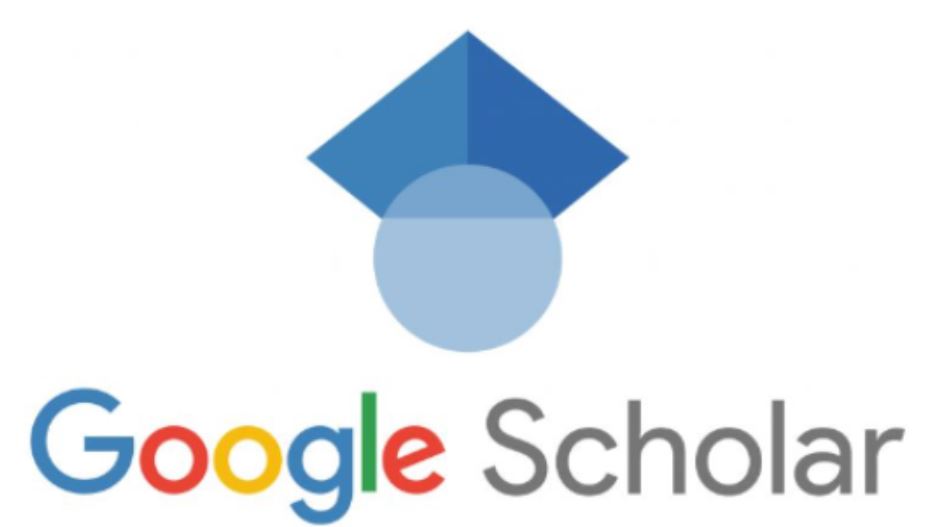Enhancing Online Learning with Google Scholar
22nd October 2024
Diane Marley
If you are seeking to improve your online learning experience, consider the advantages of utilizing Google Scholar. This includes the functionalities of creating an account, customizing preferences, searching for pertinent articles, and referencing sources in different citation styles.
Learn about the methods for saving and categorizing sources, engaging in collaborative efforts with others, and receiving guidance on optimizing the capabilities of this robust tool.
Join us as we explore the realm of Google Scholar for online learning.
Why Use Google Scholar for Online Learning?
Employing Google Scholar for online learning can markedly improve one's educational journey by granting access to a wide range of academic materials, scholarly articles, and digital utilities tailored to assist both students and educators in their pursuit of knowledge.
What are the Benefits of Using Google Scholar for Online Learning?
The utilization of Google Scholar for online learning presents numerous advantages, encompassing the accessibility of reputable sources and scholarly journals, as well as the capability to conduct thorough literature searches and procure scholarly articles.
Google Scholar enables learners to systematically explore a diverse range of academic resources spanning multiple disciplines, facilitating a comprehensive comprehension of their subjects. This platform affords the benefit of accessing materials that may not be easily attainable through conventional search engines, thereby augmenting the depth and caliber of research conducted by students. Additionally, this user-friendly tool aids in citation tracking and keeping abreast of the latest developments, significantly enhancing the enrichment of online learning experiences.
How to Use Google Scholar for Online Learning?
Google Scholar represents a potent academic search engine that can be harnessed for the purposes of online learning through the strategic utilization of its functionalities for information retrieval, literature searches, and accessing scholarly publications.
Step 1: Create a Google Scholar Account
The initial step in utilizing Google Scholar for online learning involves establishing a Google Scholar account. This account grants individuals personalized access to scholarly articles, citations, and research updates. Once an account is created, users have the opportunity to customize their settings to receive notifications that are specifically tailored to their research interests. This customization allows users to remain abreast of the most recent developments within their respective fields.
Furthermore, possessing a Google Scholar account enables individuals to curate and maintain a personal library, facilitating the storage of relevant articles for future reference. By actively engaging with the academic community on Google Scholar, users can collaborate with peers, share their own scholarly contributions, and cultivate relationships that foster academic growth. This network of individuals who are dedicated to scholarly pursuits serves as a valuable platform for exchanging ideas and fostering mutual advancement within the academic sphere.
Step 2: Set Up Your Preferences
Configuring your preferences in Google Scholar is essential for personalizing your search results and notifications to align with your specific academic interests and online learning requirements. Customizing your settings allows you to refine search results based on relevance, citations, and publication date, ensuring efficient access to the most pertinent information.
Efficiently managing notifications enables you to remain informed about new research in your field, facilitating your proficiency in academic studies or research endeavors. Leveraging digital tools for citation analysis and bookmarking articles for future reading give the power tos you to establish a tailored library tailored to your educational objectives, thereby enriching your overall learning journey.
Step 3: Search for Relevant Articles and Sources
The process of searching for relevant articles and sources on Google Scholar entails the utilization of specific keywords and search strategies to efficiently retrieve the most pertinent information for academic research purposes. An effective tip to optimize this search process is to employ Boolean operators such as AND, OR, and NOT in order to refine search queries. By integrating these operators with keywords, researchers can effectively narrow down or broaden their search results. Additionally, enclosing phrases within quotation marks ensures that the search engine specifically looks for the exact words in the designated order.
The selection of accurate keywords related to the research topic is paramount in enhancing the probability of identifying the most relevant sources. Subsequently, upon the display of search results, researchers have the option to further filter the outcomes based on various criteria such as publication date, authorship, or journal in order to access the most recent and credible academic articles.
How to Cite Sources from Google Scholar?
Referencing sources from Google Scholar is a fundamental skill in academic writing, as it facilitates accurate attribution and upholds academic integrity by utilizing the extensive scholarly resources accessible.
APA Style
For cite sources from Google Scholar in APA style accurately, it is imperative to adhere to specific guidelines. These guidelines typically entail including the author's name, publication year, title of the paper, and relevant source details.
When referencing a source in APA style, the author's last name should precede their initials, and the publication year should be encapsulated within parentheses (e.g., (Smith, J., 2021)). Subsequently, the title of the paper should be presented in sentence case, with only the initial letter of the first word capitalized. Additionally, it is crucial to incorporate publication specifics, such as the name of the journal or website where the source was originally sourced.
Utilizing Google Scholar's citation tools proves to be invaluable in maintaining accuracy in APA citations. These tools offer an array of templates and formats tailored to suit various source types, thereby facilitating the citation process.
MLA Style
In the context of MLA style citation, referencing sources from Google Scholar entails conforming to specific formatting guidelines that include the author's name, title of the article, publication title, and other pertinent details.
When adhering to MLA citation conventions, it is imperative to maintain a consistent and precise approach to documenting sources employed in academic and research endeavors. For example, when citing a scholarly article sourced from Google Scholar in MLA format, the citation typically commences with the author's surname followed by a comma and the first name. Subsequently, the article's title is presented within quotation marks, succeeded by the italicized publication title where the article is housed, the publication year, and the relevant page numbers.
Google Scholar serves as a valuable resource for simplifying the process of generating accurate MLA citations by offering preformatted citation options for diverse sources, thereby aiding students and researchers in saving time and mitigating errors in their bibliographies.
Chicago Style
The Chicago citation style for sources obtained from Google Scholar necessitates the inclusion of the author's name, article title, journal name, volume number, issue number, and publication date.
In the Chicago citation style format, the author's name is presented with the last name preceding the first name, separated by a comma. The article title should be enclosed in quotation marks, while the journal name should be italicized. Typically, the volume number is succeeded by the issue number in parentheses. For instance, a sample citation would appear as follows: Smith, John. 'The Impact of Climate Change.' Journal of Environmental Studies 10(2) (2021).
To meticulously craft Chicago-style citations using Google Scholar, individuals can leverage the citation export function to readily generate formatted citations.
How to Save and Organize Sources from Google Scholar?
Effectively saving and organizing sources from Google Scholar can significantly improve one's information management skills. This practice enables individuals to efficiently track important academic resources and streamline their research process.
Creating Folders and Labels
Establishing folders and labels within Google Scholar serves the purpose of categorizing and overseeing your saved academic materials, facilitating easy retrieval and improved organization.
The task of organizing research findings can often present challenges, particularly when dealing with a substantial volume of articles, papers, and studies. Through the customization feature enabling the creation of folders and labels in Google Scholar, efficiency in this process is heightened as related resources can be grouped together. By assigning labels based on factors such as subject matter, publication date, or relevance to your research area, the swift retrieval of specific materials is facilitated. This approach not only boosts productivity but also ensures alignment with one's academic pursuits.
Exporting Citations to Reference Management Software
Exporting citations from Google Scholar into reference management software such as EndNote, Mendeley, or Zotero is a strategic practice that enhances the organization and accessibility of cited sources for academic writing purposes. This method not only optimizes time management but also contributes to error reduction and enhances reference accuracy. Leveraging the functionalities of reference management software enables users to efficiently generate bibliographies, oversee various citation styles, and engage in research collaborations.
The integration of these tools with Google Scholar serves to streamline operational processes by facilitating the direct importation of references, PDFs, and metadata from search inquiries. This seamless integration augments research productivity by enabling smooth data transfer across platforms, thereby refining the overall citation management procedures.
How to Use Google Scholar for Collaborative Learning?
Google Scholar is an invaluable tool for facilitating collaborative learning among students and educators. It offers features that allow users to share research papers, participate in study groups, and engage in academic discussions, ultimately fostering a collaborative educational environment.
Sharing and Collaborating on Research Papers
Utilizing Google Scholar as a platform for sharing and collaborating on research papers offers the academic community an opportunity to engage in knowledge dissemination and collective research endeavors.
When research papers are shared on Google Scholar, scholars gain access to a broad audience of academics at a global scale, thereby enhancing the visibility and impact of their work. Collaborating on this platform allows researchers to combine their diverse expertise and perspectives, contributing to the development of more robust and comprehensive research outcomes.
The benefits of collaboration include the stimulation of creativity, an acceleration in the pace of discovery, and the establishment of a sense of community within the academic realm. To ensure the effectiveness of collaborative efforts, it is imperative to establish clear lines of communication, define realistic objectives, allocate tasks efficiently, and maintain receptiveness to varying viewpoints.
Creating and Joining Study Groups
The establishment and participation in study groups via Google Scholar can enhance collaborative learning by facilitating cooperative efforts among students and educators in research projects and academic discussions.
These study groups offer members the chance to share resources, exchange ideas, and provide peer feedback, thereby nurturing a supportive and interactive learning environment. Through collaboration with peers, individuals can obtain varied perspectives, deepen their comprehension of complex subjects, and hone their critical thinking abilities.
Engagement in study groups on Google Scholar allows learners to access a broader range of knowledge, explore diverse research methodologies, and address challenging concepts more efficiently. This collective endeavor frequently results in improved learning outcomes, heightened academic performance, and a more robust sense of community within academic circles.
What are the Limitations of Using Google Scholar for Online Learning?
Although Google Scholar offers valuable resources for online education, it is important to acknowledge its limitations. These limitations include restricted access to certain sources, potential quality control issues, and language barriers. These factors can impact the comprehensiveness and reliability of the information available through Google Scholar.
Limited Access to Some Sources
One of the constraints associated with Google Scholar is its limited access to certain scholarly sources, impeding the ability to conduct comprehensive research and retrieve information effectively for online learning purposes.
This limitation often poses a significant challenge for students and researchers engaged in rigorous academic inquiries. The unavailability of specific articles or journals can constrain the scope and depth of their research, potentially resulting in gaps within their findings.
To address this issue, there exist alternative methodologies that can complement the resources available through Google Scholar. Researchers can leverage university library databases, interlibrary loan services, academic networking platforms, and direct communication with authors to access restricted information. By employing these supplementary avenues, researchers can enhance the comprehensiveness and richness of their research processes.
Lack of Quality Control
The absence of rigorous quality control measures on Google Scholar may lead to the inclusion of less reputable sources, thereby impacting the credibility of academic research and online educational materials.
This situation poses challenges for researchers, students, and educators who depend on Google Scholar for accessing scholarly literature and conducting their academic endeavors. In the absence of adequate supervision, inaccurate or misleading information could proliferate, resulting in a distortion of knowledge and potential setbacks in the progress of various disciplines.
To address this concern, individuals must cultivate the ability to distinguish between reliable sources and those of questionable credibility. Techniques such as cross-referencing, evaluating the credentials of authors, and scrutinizing the publication platforms can aid in the identification and selection of credible sources for obtaining trustworthy information.
Language Barriers
The presence of language barriers on Google Scholar can hinder the ability of non-English speakers to access scholarly articles and research papers, thereby impeding the inclusivity and accessibility of online learning resources.
This challenge presents a significant obstacle in a globalized world where the sharing of knowledge plays a vital role in educational progress. To tackle this issue effectively, it is imperative to deploy strategies such as the provision of multilingual search options, the availability of translation services for abstracts and key sections, and the promotion of articles in different languages.
Through the adoption of these measures, Google Scholar can improve its user-friendliness for a diverse audience and cultivate a more inclusive environment where individuals from various linguistic backgrounds can equally benefit from the vast array of information accessible.
Tips for Making the Most of Google Scholar for Online Learning
For optimize the utility of Google Scholar for online learning purposes, it is imperative to implement effective learning methodologies, employ advanced search strategies, and integrate Google Scholar with other digital tools to augment academic achievement.
An actionable recommendation to optimize the utilization of Google Scholar is to establish alerts for specific keywords or subjects pertinent to one's area of academic focus. These alerts serve as a mechanism to remain abreast of the most recent research findings and publications within the designated field of interest.
Furthermore, organizing search outcomes by utilizing folders or labels can streamline the research workflow and facilitate swift retrieval of pertinent articles as necessary. Through harnessing the sophisticated functionalities offered by Google Scholar, one can efficiently navigate the wealth of academic resources available online, thereby contributing to enhanced learning outcomes and academic proficiency.















